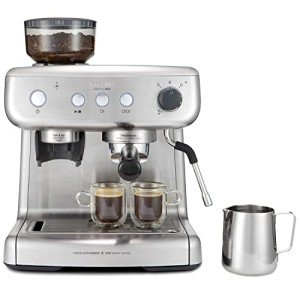Understanding Dual Boiler Espresso Machines: A Comprehensive Guide
Espresso is an art as much as it is a science. For coffee enthusiasts and baristas alike, accomplishing the best shot of espresso demands accuracy and control over brewing variables. One of the most efficient ways to attain this accuracy is through using dual boiler espresso machines. This article explores the performance, advantages, and considerations of dual boiler espresso machines for both novices and experienced coffee aficionados.
What is a Dual Boiler Espresso Machine?
A dual boiler espresso machine includes two separate boilers: one for developing espresso and the other for steaming milk. This style enables the user to brew coffee and steam milk all at once, attaining ideal temperature control for both procedures. This is essential for developing lattes, coffees, and macchiatos, where both active ingredients are important.
Table 1: Key Components of Dual Boiler Espresso Machines
| Component | Function |
|---|---|
| Espresso Boiler | Heats up water to the perfect brewing temperature (around 190 ° F) |
| . Steam Boiler | Heats water to a higher temperature level (around 250 ° F) for steaming milk. |
| PID Controller | Regulates the temperature level of the boilers for accuracy developing. |
| Group Head | Where the coffee grounds sit and hot water goes through. |
| Steam Wand | Delivers steam to froth milk. |
Benefits of Dual Boiler Espresso Machines
1. Synchronised Brewing and Steaming
The most substantial benefit of dual boiler espresso machines is the ability to brew espresso and steam milk at the exact same time. This performance is particularly helpful in hectic environments, such as coffee shops, where speed and quality are vital.
2. Consistent Temperature Control
Dual boiler machines frequently feature sophisticated PID (Proportional Integral Derivative) controllers that keep a constant temperature level throughout the developing process. Consistency is vital in espresso making to make sure the best extraction, hence improving taste and aroma.
3. Customization and Versatility
With two different boilers, users can customize the temperature level settings for both espresso developing and milk steaming. This suggests different types of coffee, such as lighter or darker roasts, can be prepared completely to fit specific taste profiles.
4. Ideal for Advanced Techniques
For those interested in latte art or other sophisticated strategies, a dual boiler espresso machine offers the flexibility to deal with different milk textures while also drawing out espresso. This versatility makes it an attractive option for baristas who desire to develop their abilities.
5. Longevity and Durability
Lots of dual boiler machines are developed with high-quality materials designed for durability. They are frequently made from stainless-steel and feature resilient elements, making them a worthwhile investment for anyone serious about coffee.
Drawbacks of Dual Boiler Espresso Machines
In spite of their numerous advantages, dual boiler machines can have some downsides:
- Higher Cost: Dual boiler machines tend to be pricier than their single-boiler counterparts, which may not be ideal for casual coffee drinkers.
- Size and Space: These machines might inhabit more counter top space than others, making them less ideal for little kitchens.
Table 2: Key Considerations When Choosing a Dual Boiler Espresso Machine
| Consideration | Description |
|---|---|
| Budget | Dual boiler machines can range from ₤ 1,000 to over ₤ 4,000. |
| Size | Inspect your kitchen area before purchasing. |
| Brand name Reputation | Try to find well-reviewed brand names with great client assistance. |
| Functions | Consider what features are necessary (e.g., PID controller, volumetric options). |
| Maintenance | Some machines may need more routine maintenance than others. |
Frequently asked questions
1. Are Manual Espresso Machines ?
Yes, they are worth the investment for major coffee lovers or professional baristas who value accuracy in espresso extraction and milk steaming.
2. How do I maintain a dual boiler espresso machine?
Routine maintenance includes descaling the machine, cleaning the group head, and ensuring that the steam wand is without milk residue. Consult the producer's manual for particular standards.
3. Can I use a dual boiler espresso machine for other developing techniques?
Normally, dual boiler machines are created primarily for espresso. Nevertheless, they can typically brew quality drip coffee and other styles with the ideal settings and changes.
4. What brands are understood for their dual boiler machines?
Some respectable brand names consist of La Spaziale, Breville, and ECM. Each brand name has its own distinct features and prices.
5. What is the average lifespan of a dual boiler espresso machine?
With correct care and maintenance, a dual boiler machine can last over a years, making it a long-lasting investment for coffee fans.
Dual boiler espresso machines represent the peak of espresso-making technology, combining art and science into one compact gadget. While they need a higher preliminary financial investment and more countertop space, the advantages they offer-- such as simultaneous developing and steaming, precise temperature control, and toughness-- make them ideal for serious coffee enthusiasts. Comprehending the workings, advantages, and considerations for these machines will enable consumers to make educated decisions and raise their coffee developing experience. Whether in your home or in a busy café, a dual boiler machine can truly boost the art of espresso.

